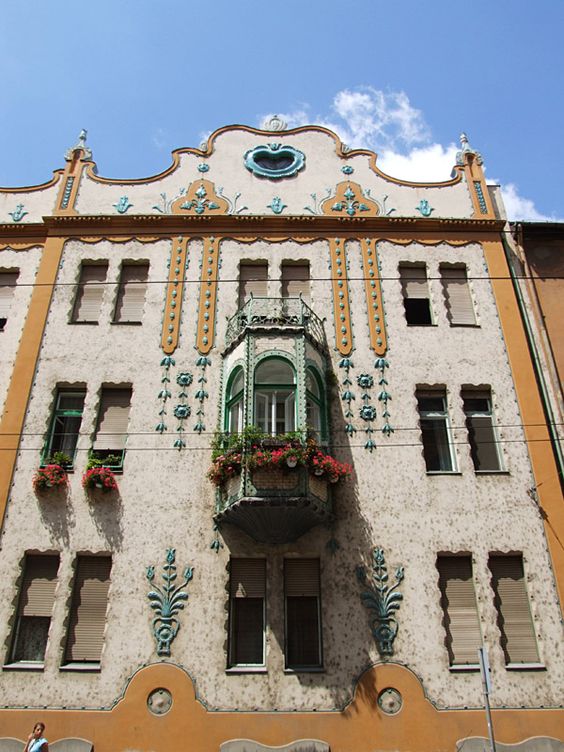#14180. Decorative Secession Façade with Hungarian Motifs
This magnificent architectural specimen represents a striking example of Secession style with elements of Hungarian Art Nouveau. The façade of the building is distinguished by rich decorative design and a characteristic asymmetrical pediment shape that gives the building a unique silhouette. The white plaster of the main wall field serves as a perfect background for colorful ornamental elements.
The details of the façade are especially expressive: an elegant wrought-iron balcony with flower planters, decorative floral motifs in turquoise-green tones, and orange vertical elements that emphasize the rhythm of the window openings. The composition of the façade is crowned by a wavy attic with a central medallion, giving the entire building a festive, almost theatrical character.
This façade design demonstrates how national motifs are skillfully used in combination with the principles of Art Nouveau from the early 20th century. In modern private construction, one can borrow techniques such as contrasting color schemes, the use of natural ornaments, and asymmetrical façade composition to give a building individuality.
